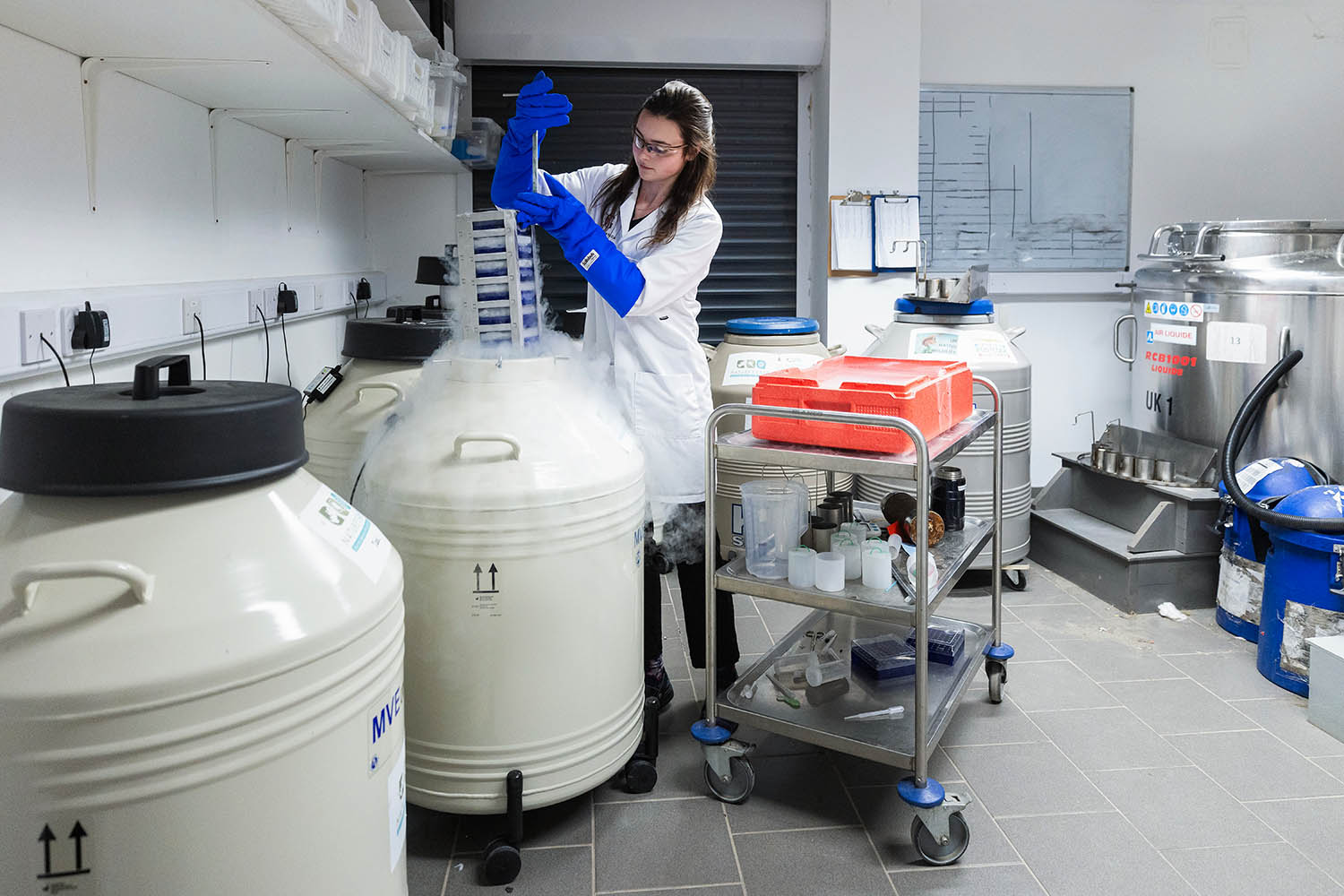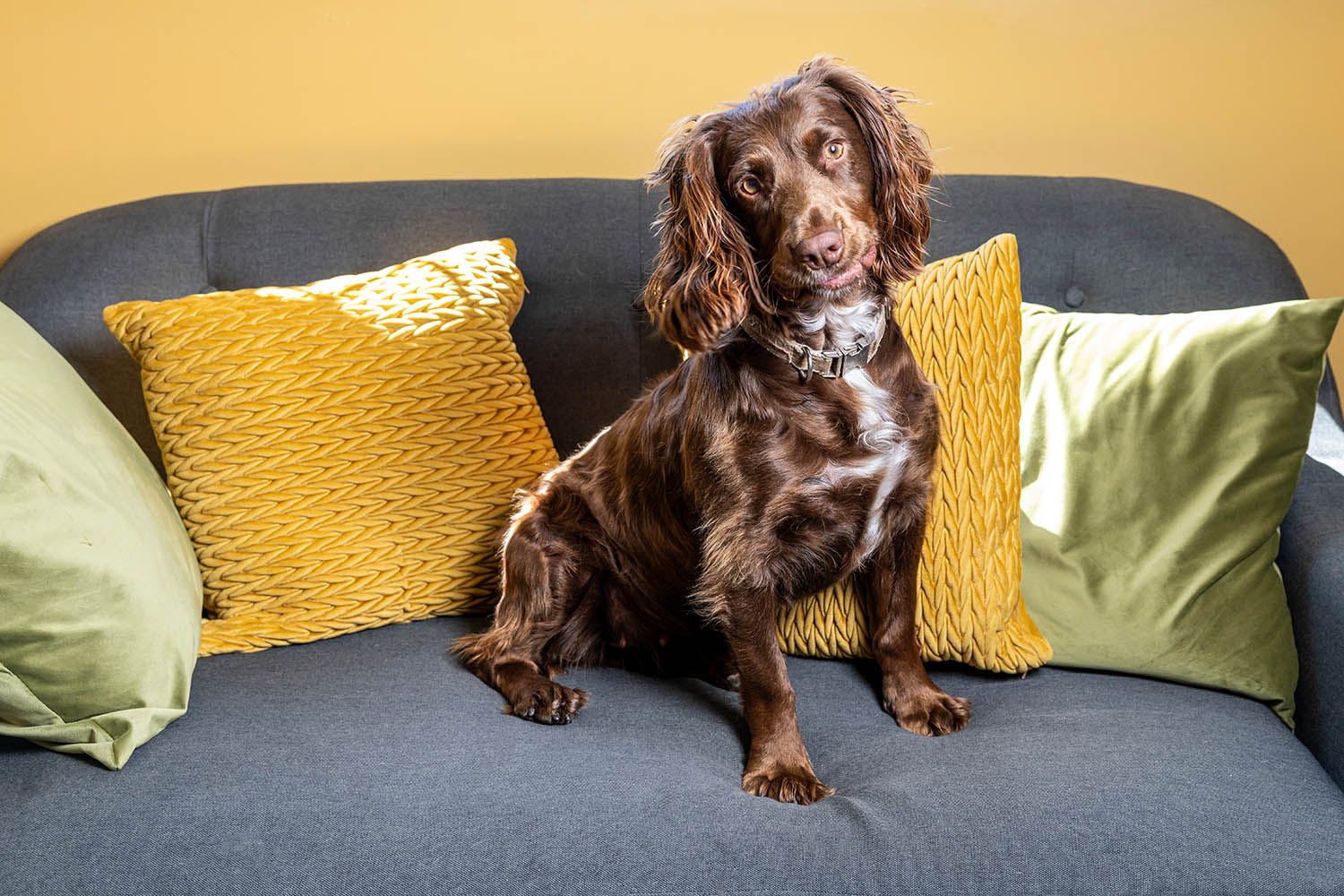Tauron, a dog of unknown pedigree, died defending his master Zenon from a wild boar, and the third century BC Greek bureaucrat repaid his courage by burying him with an 11-line epitaph detailing how the dog had “made a gift of the beast to Hades and died himself”.
Modern Zenons have more options for their memorials. Pet cloning is here, and growing numbers of owners are trying not to lose their faithful companions at all.
Gemini Genetics is expanding to cope with demand from people in the UK and Europe looking to take the first step towards replacing their dog, cat or horse with a genetic replica.
The lab in Shropshire has 6,000 samples stored cryogenically at -196C and the rate of new customers has increased to about two each week, says Gemini’s manager, Lucy Morgan.
“We’ve just purchased a second laboratory space and office space,” she said. “We’re definitely growing.”
Cloning is in effect banned for commercial purposes in the UK as it is treated as animal experimentation and needs Home Office approval. Instead, Gemini freezes skin samples to send to ViaGen Pets, a Texas-based company which has created more than 2,000 clones. More than 30 of those have been sent to customers in the UK including Gem, a three-year-old working cocker spaniel who belongs to Tullis Matson, the owner of Gemini Genetics.
Cloning grew out of Stallion AI, the main event at Matson’s farm that focuses on freezing horse semen from studs. Mares are different. Although medics have successfully found ways to freeze human eggs, it does not work with horses. “The only way to preserve a female effectively is to take a skin sample,” Morgan said.
Samples are frozen in liquid nitrogen, done gradually to put the cells in suspended animation rather than kill them. Many customers leave it at that, paying £600 to preserve the skin sample, plus a monthly storage fee. Some take the next step and send the tissue to ViaGen for it to be transformed into a living animal, with a $50,000 (£37, 000) price tag.
Can an animal be worth that much?For people who are prepared to pay that much, the question raises complicated feelings about death and second chances.
‘The fact that she can be brought back – it has helped me with the grieving process’
Dominika Sojka
“Everybody has a different idea about consciousness and God, but from my point of view, biologically she will be the same dog,” said Dominika Sojka, whose dog Bijoux, a husky-chow chow crossbreed, died after she was hit by a car in Bournemouth. “The fact that I could clone her and that she can be brought back – it did help me through the grieving process.”
She and her partner, Ian Clague, are saving up to start the process, but having a sample from Bijoux stored in one of Gemini’s liquid nitrogen canisters is itself a comfort.
“You can compare it to IVF,” Sojka said. “People freeze their eggs, and wait for the day when they’re ready. It’s similar. I feel [Bijoux] is safe, when she’s there. She’s waiting to come back when we’re ready financially.”
Kelly Anderson’s cat Chai died aged five after an operation to remove a plastic wrapper she’d eaten. Hearing the news was “probably one of the most traumatic things I’ve ever been through”, Anderson told The Observer. “People undervalue how much grief can really go into losing a pet. Animals are constantly there for us with unconditional love.”
Belle, her clone, is now four, a “Chai 2.0”, Anderson said. They are genetic twins with the same nature, but nurtured differently. “[Belle] was socialised from the get-go and fed from a silver spoon, versus poor Chai who did not have that opportunity, so they had very different starts to life and I think that shaped their personalities.”
Ancient epitaphs such as Tauron’s are a reminder that our obsession with animals is not new. A hound was found buried with two Paleolithic humans in Germany. The human-animal bond, as anthrozoologists call it, has a long history and continued last week at Cannes with the Palm Dog awards, now in its 25th year of celebrating canines in movies.
Perhaps cloning is merely commercialisation, an extension of the lockdown fur baby boom that saw 3.2 million people get a pet and splash out £90m on pet products last Christmas in Britain, a third higher than in 2023, according to Kantar, a research agency. Or it may be linked to the so-called loneliness epidemic. The Office for National Statistics says 24% of UK adults feel lonely often, always or some of the time and 8.4m people live alone. Pets make reliable companions. As Zenon attested.

Cloning: the science
Reproductive cloning is a process known as somatic cell nuclear transfer and starts with live skin cells, taken from a recently dead animal or a live one. The skin sample is cleaned then cultured to grow new cells to prove it is viable. Usually, the cells are preserved in liquid nitrogen to be stored. An unfertilised egg is taken from a donor animal and the nucleus is removed, then replaced with cells from the skin sample. The skin cells are fused with the egg using an electrical pulse and the egg then divides and grows. The embryo is then implanted in a surrogate animal for her to carry it to term. Therapeutic cloning involves creating embryonic stem cells to replace tissues.
Researchers have cloned sheep, cows, mice, goats, pigs, rabbits, cats, camels and monkeys, as well as mules and across species: gaurs with cows, African wildcats with cats, ibexes with goats and camels with dromedaries.
Cloning: the history
On 23 February 1997, The Observer’s science editor, Robin McKie, revealed the existence of Dolly the sheep. Dr Ian Wilmut and his team at the Roslin Institute in Scotland had successfully cloned the animal from an adult cell.
The news provoked hysteria that human cloning would soon follow, but although South Korean researchers have claimed to have cloned a human embryo, there is no evidence they have.
Animal welfare advocates such as the RSPCA say the process causes pain, suffering and distress to the surrogate. Dolly died aged six, suffering arthritis, and there are concerns that cloned animals are vulnerable to disease.
In the academic journal Animals last month, conservationists said cloning could support endangered species. So far 56 species have been cloned successfully, many at San Diego Zoo, and for 90% of them the clones lived longer than their natural life expectancy.
Photography by Fabio de Paola/The Observer

